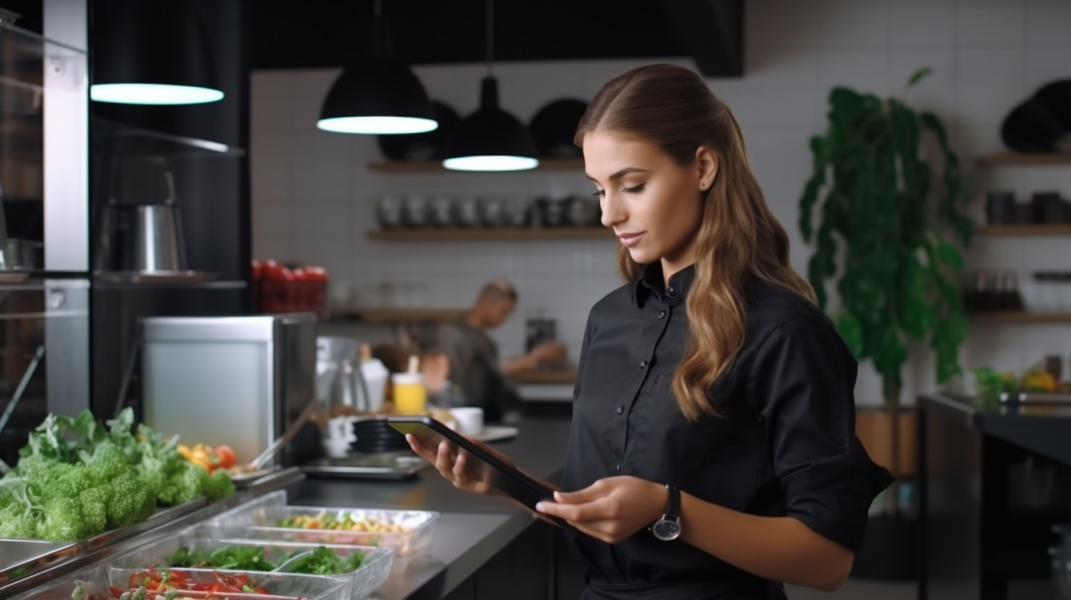If you were to list your business assets, what would come to mind? You might think of equipment, real estate, or even devoted staff members, but what about the people you serve? Do you consider them an asset? You should. Customers – especially repeat customers – are valuable to your business. Numerous studies have documented the relationship between customer loyalty and customer lifetime value (CLV), the total amount of money an average customer is expected to spend on a business’s products or services during their relationship with the company. Loyal customers typically have higher CLV, meaning they are likely to spend more over time with the business. One survey determined that a company’s top 10% of customers – their repeat customers – spend 3 times more per transaction than the other 90% of customers. The top 1% of repeat customers spend 5 times more per order than the other 99%.
For multi-unit restaurant chains, consistency is the key to cultivating customer loyalty. This consistency extends beyond just the quality of food and service; it requires meticulous attention to food safety, which plays a critical role in building and maintaining customer trust and loyalty. Meticulous food labeling is a cornerstone of these food safety practices. There’s a great deal on the line. Consider the case of Chipotle’s E. coli outbreak. In the fall of 2015, food from Chipotle put 26 people in the hospital and affected the company’s operations in 16 states. The crisis led to the temporary closure of several locations. Widely covered in the media, this crisis resulted in a substantial drop in customer trust and loyalty. It took considerable time and effort for Chipotle to rebound from the crisis. This incident demonstrates how a lapse in food safety can lead to a crisis of customer confidence. Customers who experience or hear about food safety issues are less likely to return to a restaurant and often share their experiences with others, further damaging the establishment’s reputation.
Digital solutions are revolutionizing the way that restaurants manage effective food labeling. A digital brand standard platform with seamless label printing integration ensures compliance with food safety regulations and simplifies the process, enhancing overall efficiency.
Why is Consistent Food Labeling Important?
Consistency in labeling across all locations is crucial for maintaining brand standards and ensuring uniform food quality and safety across multi-unit organizations. Digital solutions make this consistency achievable and manageable, regardless of the scale of the operation. Old-fashioned, handwritten labels are prone to legibility issues and errors in date notation and can be time-consuming to produce. In contrast, digital label printing streamlines the process, especially when integrated with a comprehensive field assessment platform like Audit App by MeazureUp, allowing kitchen staff to generate labels with pre-set formats, ensuring consistency and accuracy in the information displayed. This saves and enhances operational efficiency. A digital approach also offers the flexibility to adjust label content as needed, catering to specific requirements of different food items.
How to Date and Label Prepped Food
Labeling prepped food does more than meet regulatory requirements. Proper labeling plays a pivotal role in maintaining food safety and quality in any food service establishment. Clearly mark each prepped item with crucial information such as the date of preparation and an appropriate use-by date to manage the shelf life of food items, ensure that ingredients used are fresh and safe for consumption, and prevent the use of expired or potentially spoiled ingredients.
What Foods Are Required to Be Labeled in a Restaurant?
Understanding what needs to be labeled in a restaurant is fundamental. Generally, any perishable, prepped, or partially cooked food not served within 24 hours must be labeled. This includes prepped vegetables, mixed salads, marinated meats, sauces, and pre-cooked items. The label should include critical information like the prep date, use-by date, and possibly the name of the employee who prepped the food. This ensures compliance with health regulations and aids in inventory management and quality control.
What Food Items Don’t Need to be Labeled in a Restaurant
While labeling is integral to food safety, not all items require it. Foods that are served immediately after preparation, whole fruits and vegetables, and unopened commercially processed foods that are served in the container they were processed in typically do not require labels. Understanding this distinction helps in focusing resources and attention where it’s most needed, ensuring that the labeling process is both efficient and effective.
Why Are Restaurants Required to Date Food Labels?
Dating food labels is a legal requirement in many jurisdictions and serves multiple purposes. It primarily helps in monitoring the freshness and safety of food, preventing foodborne illnesses. Labels with dates ensure a first-in, first-out inventory system, reducing waste and ensuring that the oldest stock is used first. This is not just a safety measure but also a cost-effective strategy for inventory management.
Why Should Restaurants Label Their Food
Beyond legal compliance, there are compelling reasons for restaurants to label their food. Labels act as a communication tool among staff, ensuring everyone is aware of what each container holds and its freshness status. This reduces errors and enhances efficiency in a fast-paced kitchen environment. Labeling also demonstrates a commitment to food safety and quality, which can significantly impact customer perception and loyalty, ultimately driving revenue.
How to Make Food Labels for Restaurant Success
Creating effective food labels involves more than just sticking a date on a container. It requires a carefully considered system that is quick, accurate, and compliant with regulatory standards. This is where digital solutions like MeazureUp come into play. Integrated label printing makes it possible to create customized labels that can include a range of data – including prep person, item prepped, prep date and time, and use by date and time – along with easy printing at the push of a button. This streamlines the labeling process and weaves it into broader inventory management and food safety practices.
Effective food labeling ensures the highest standards of food safety, enhances operational efficiency, and drives revenue by building a brand that customers trust. MeazureUp’s digital platforms with label printing integration offer an effortless, efficient way to manage this critical aspect of your restaurant operations. Let’s talk about partnering to create consistency, customer loyalty, and success for your brand. Schedule a demo today.



